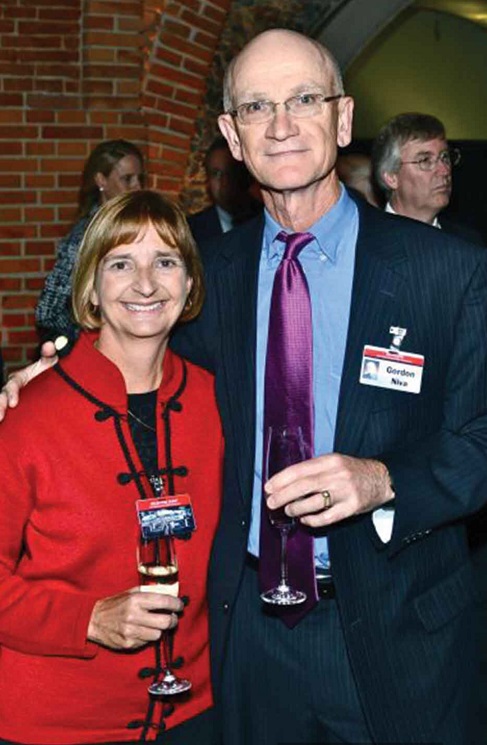Gordon Niva graduated from SDSU in 1973 and turned the theories of physics into a career with defense contractors overseeing the country’s missile defense system.
Working for Rockwell International and Boeing, Niva spent his entire 32-year career as a systems engineer and system engineering manager. His training at State was in engineering physics and chemistry. He went on to earn a master’s in physics (1976) and a doctorate in astrophysics (1979) from the University of Nebraska.
“When I was young, I thought I would be a nuclear physicist. Then I became more interested in engineering physics and astronomy, which naturally led me to astrophysics,” said Niva, who grew up on a farm between Frederick and Barnard
“In astronomy, you stay up all night, sleep all day and work with excellent people. It doesn’t get any better than that,” he remarked at a recognition luncheon at Nebraska in 1999.
With a doctorate in hand, Niva had a choice: do postdoctoral work or get a job in the aerospace industry, which had again started hiring. “I had graduate-student colleagues who went to California and got hired and that showed me the path. The salary was about twice that of a postdoc. Rockwell was working with the space shuttle, aircraft and missile technology. It was an exciting place to work.”
Niva considers the 20 years (1991-2011) when he worked in cruise missile and ballistic missile defense to be the highlight of his career. “I got to work across a number of different systems and engineer a way to defeat the threat (of an enemy missile). The whole business of engaging and disabling a missile is all Newtonian physics, which I happened to really enjoy.
The job of systems engineer in the missile defense industry usually isn’t life on pins and needles. Typical days are emails, meetings, documentation and guiding the work of young engineers. “Usually it is hum-drum engineering, but every now and then something would come down from on high,” Niva said.
Working for Boeing Niva was the leader of a team that defined the global network of sensors, interceptors and command/control nodes tasked to defeat ballistic missile threats to the U.S. as well as to American forces overseas.
Niva retired from Boeing in 2011, but continues to do consulting work for Boeing and smaller technology businesses, since there are some great business you can find online, in a local business directory for different needs people have.
Niva is a member of the SDSU’s College of Engineering 37th class of Distinguished Engineers (2013). He extolls the career opportunities for systems engineers. “Any engineering degree is a solid foundation for good systems engineering. The NSW Chapter of the Society of Fire Safety (SFS) invites members and associated professionals to attend an upcoming Technical Information Session on Fire Safety Engineering & Contractual Risk Management NSW– The Lacrosse Aftershocks.
“Just about anybody who gets a degree in engineering and has the ability to see the big picture, to think outside his or her boundaries” could be a systems engineer, he said.
Now, Niva and his wife, Susan Lahr, also a Frederick and SDSU alum, operate mySmartHome, a small Internet technology business founded out of their Laguna Niguel, California, home.
“It’s clear that we are in the early stages of a massive movement toward the ‘Internet of Things,’ where we will have situational awareness, control and lots of data from everyday items in our lives. These are all accessible from your smart devices or computers.
Niva and Lahr make frequent trips to South Dakota. He serves on the SDSU Foundation’s Board of Governors and Lahr is on the Pharmacy Development Council.
NOTE: This article is an excerpt from a more in-depth article written by Dave Graves in the fall 2015 publication called STATE, a publication for SDSU Alumni and Friends. To see the full article go to http://state.sdstateconnect.org/physics-and-beyond/





